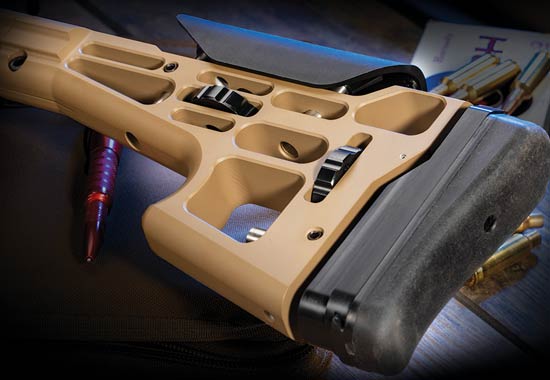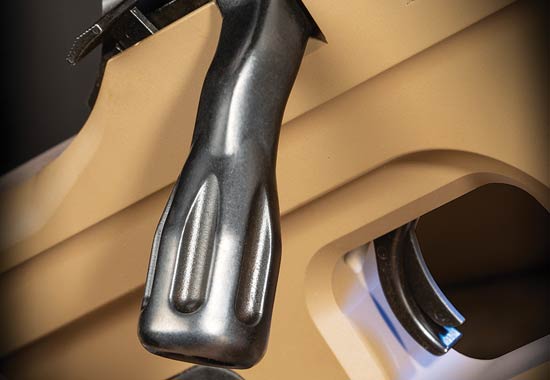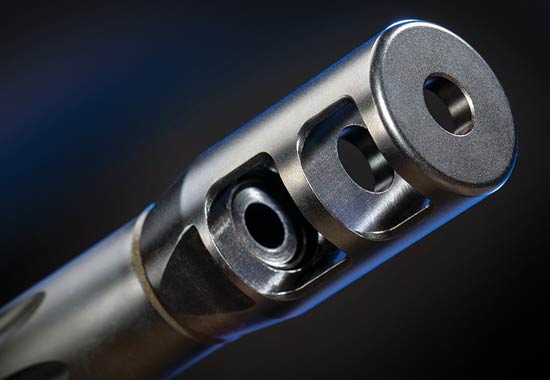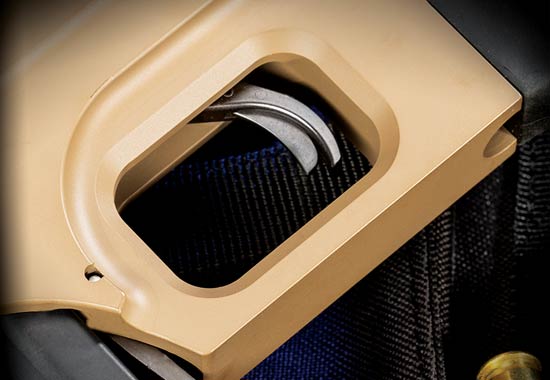Mike Cumpston GUNS Magazine – Photos By Robert Jones, The Imagesmith LLC
Where do we start talking about long-range guns? The Creed Farm seems as good a place as any, though it was not by any means the first high profile long-range shooting complex. Twelve years earlier the British were shooting at 800, 900 and 1,000 yards at Wimbledon in a venue organized by the National Rifle Association of England.
The American NRA took form in 1871 largely to promote civilian militia preparedness and the healthful benefits of outdoor recreation, both of which had languished in the late 19th Century. In 1872 the NRA bought the Long Island property and added “moor” to the name in deference to the moor-like terrain. On March 20, 1873, the New York Daily Graphic deemed the Creedmoor Match to be “The American Wimbledon. “
The reference carries through to today’s hottest rifle cartridge — its name defines the primary purpose of the 6.5 Creedmoor round. The high BC numbers in the 140-grain + range allow comfortable supersonic velocity and favorable bullet stability beyond 1,200 yards.
The efficient use of a relatively small powder charge delivers moderate recoil and portends a very useful barrel life. It has become the favorite chambering among devotees of extreme long-range shooting, along with chassis rifles — like our test gun, the Performance Center Thompson/Center Long Range Rifle.

T/C Creedmoor
Perfect Platform/ Caliber Combo
My first impression upon decanting the rifle from the shipping carton was “it’s heavy.” It weighs 11.5 lbs. A suitable optic brings it to 14.5 to 15 lbs. The centerpiece — and the source of most of the weight — is the heavy barreled action mounted in an aluminum alloy chassis — free-floated, biologically inert and pretty much immune to the vagaries of nature.
The barrel is 24″ long from bolt face to muzzle. The flutes provide additional surface area for rigidity and heat dispersion and the 5-groove barrel is said to enhance accuracy by minimizing stress and distortion of the bullet and easing fouling removal. The barrel is made of 4140 steel, 1:8 RH twist. Our sample came with the trigger adjusted to a perfectly poised 2.5 lbs. and we left it alone. The detachable box magazine holds 10 rounds.
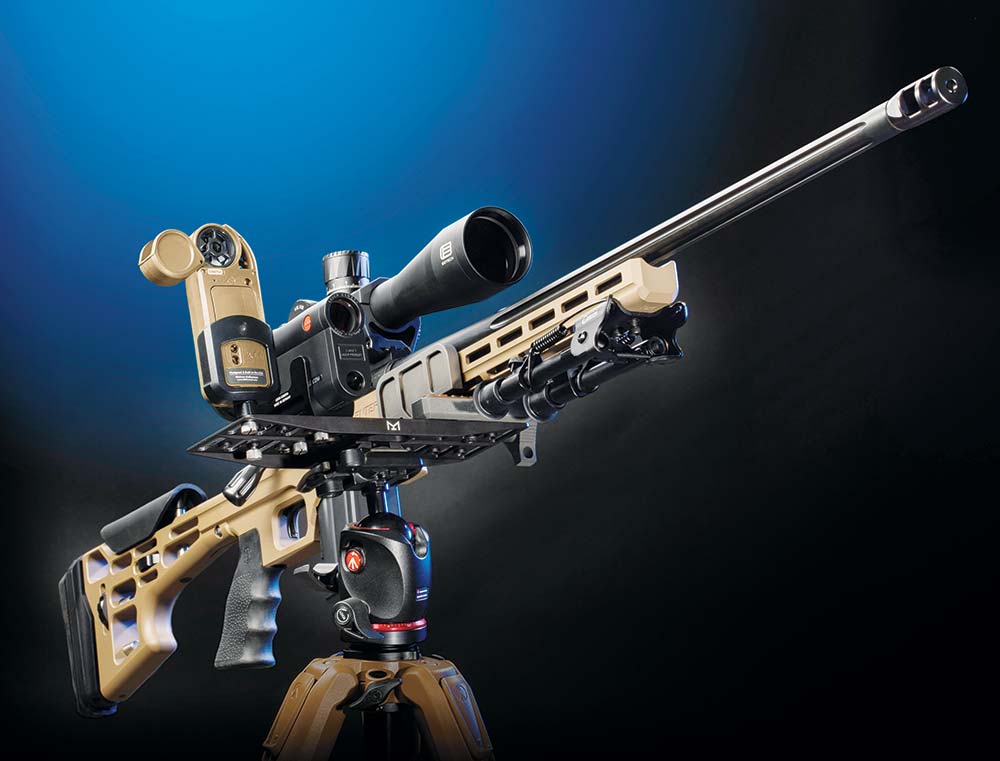
Accuracy accessorizing: The TC LRR with an EOTech Vudu 3-18X50 scope, a Kestrel 5700 Elite wind meter, a Leica laser rangefinder, a Manfrotto tripod with HOG Gun Saddle and an MOD DOS mounting platform.
Specialized But Field-Capable
The LRR chassis is a significant contributor to the need to carry a folding hex wrench “multi-doo-dad” everywhere you go. The “buttstock”is secured to the action via pressure from an appropriately sized Allen screw.
Length of pull and the cheekpiece height are adjustable and also dogged down via hex. While the bolt release functions in the time-honored fashion, the only way you can get it out of the rifle is by removing either the entire stock assembly or the cheekpiece. It is different, but easily and quickly done.
Long-range shooting — organized or otherwise — has always been an equipment race and the modern LRR systems lend versatility rather than bypass it. Thus a heavyweight rifle with state-of-the-art sights, accessory-friendly mounting options, and adjustable bipod is eminently practical for fixed-position varmint and big-game hunting. In this vein, our selected scope is the EOTech Vudu 3-18×50 ($1,599). It features a 34mm tube with illuminated mil radian reticle, side-mounted focus, zero-stop and magnification throw lever.
The large range of magnifications suit it to normal hunting ranges and the rugged assembly is an advantage for field use. It’s mounted atop the rifle’s 20 MOA rail by way of extra-tall Seekins Precision rings placing the reticle 2.5″ above center bore.
The LRR’s M-LOK forend accepts enhancements such as a Caldwell bipod.
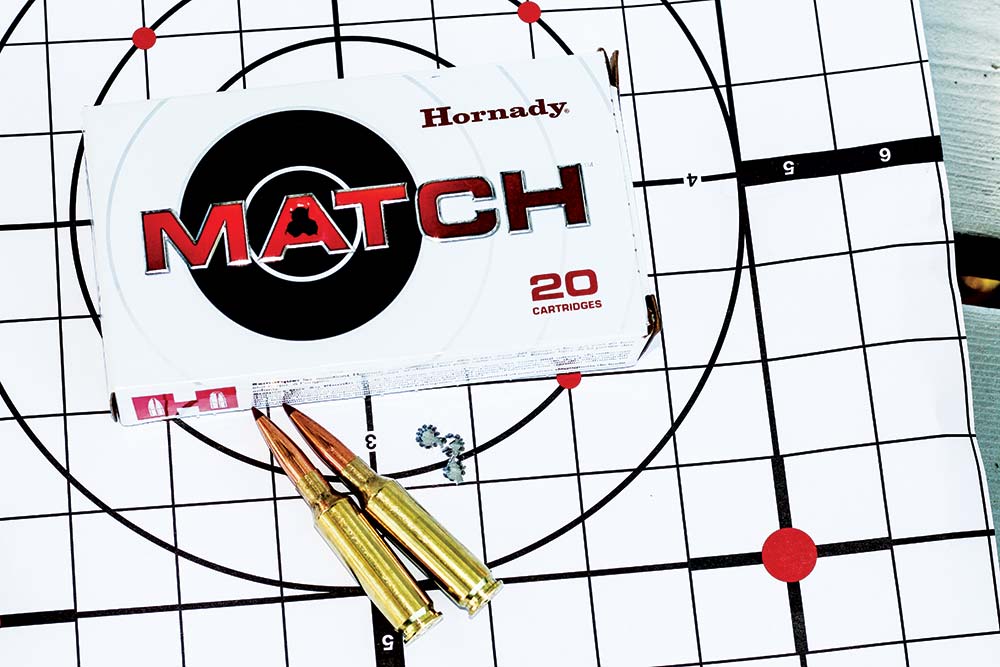
A 100-yard group with Hornady 147-gr. ELD-M rounds. Photo: Mike Cumpston
Zeroing Preliminaries
I shot several three-round groups over the supplied Caldwell bipod with a squeeze bag under the stock. These were incidental to establishing the 100-yard zero but were predictive of things to come. Even with me at the controls, groups were under 1″ with my best result being 0.43″ with the Hornady loading of its 147-gr. ELD-M bullet.
For the extended range evaluation we used this load and the Black Hills rendition using the same Hornady bullet and case. Recorded 10-round averages were 2,663 and 2,594 fps respectively. The Hornady load retained 1,571 fps at 1,000 yards with 1.47 seconds in flight while the Black Hills arrived at 1,503 fps in 1.52 seconds. The significant numbers, as we will see, are the come-up values of 8.5 and 9.1 mils.
The skeletonized stock’s comb height, length of pull and buttplate are fully adjustable. – Comfortable contour: The LRR features a distinctive, fluted bolt knob. – A highly efficient muzzlebrake — plus the good manners of the 6.5 Creedmoor — make for comfortable range sessions. – The trigger on Mike’s test gun came in at 2.5 lbs. out of the box. He left it alone.
Stretching The Envelope
Central Texas boasts two outstanding long-range shooting assets in Stan Jarosz-Rafter J Shooting Sports of Crawford, TX and Larry Cohen of Waco. Both are long-time National Match High Power shooters with much experience in Metallic Silhouette shooting, Long Range Black Powder Cartridge Rifle shooting to 1,000 yards and distance work with the 1903 Springfield. Both are Camp Perry veterans.
The men were enthusiastic about the new rig and their interest grew when they saw the Vudu optic with its Horus M59 MRAD reticule. We shot the rig at 600 and 1,000 yards under ideal conditions employing a portable Legacy Shooting Bench as well as equipment to telegraph hits on targets over half a mile away. This included a two-way radio suspended behind the standard E type steel target and a Magneto Speed T1000 strobe to flash wildly when the metal homunculus clanged from a hit.
The Hornady on-line ballistic resources program provided a useful trajectory chart and is recommended for comparing downrange performance from various cartridges. The scope comes with a separate manual which does an excellent job of demystifying the mil-radian system for those of us who think in terms of inches, fractions of inches and and minutes of angle. It explains the MRAD reticule, its reciprocals in meters and inches and its use in Stadiametric Rangefinding.
The remarkable collusion of the rifle/scope/mount package and the low-drag match ammunition enable the use of the 8 and 9 mil stadia visible at the bottom of the reticule with the magnification at 18X (or slightly below). The shooter can choose between using the reticle at 100-yard zero or going to the external elevation adjustment to sight the primary crosshair at 1,000 yards. Raising the elevation to the 8.5 or 9.1 on the dial does the same thing for our two loads as selecting the same-numbered stadia with the 100-yard zero.
At extended range it quickly became evident T/C, with co-development assistance by the Smith & Wesson Performance Center, has fielded a well-vetted product of excellent quality. Both Stan and Larry had enormous fun putting the system through its paces and were impressed by the rifle and scope.
Groups at 600 and 1,000 yards hovered around the 1 MOA mark for all three of us with three or four of each five rounds at — or below — 1/2 MOA in most cases. This is likely a more accurate predictor of the rifle’s baseline accuracy than the full five rounds and the likely interjection of human error.
Nevertheless, Stan’s subsequent load development with the same ELD bullet is closing in on 1/2 MOA across the board.
While many shooters have limited access to extreme range shooting, such venues are becoming more available. In any case, a soundly engineered and extremely accurate rifle is always its own excuse for being and the Performance Center T/C LRR certainly meets the criteria. The MSRP? A very reasonable $1,211.
Thanks to GUNS Magazine for this post – Click here to visit GUNSMagazine.com.
Click here to follow GUNS on Facebook.
Click here to get GUNS Magazine delivered to your door – Subscriptions On Sale Now!



